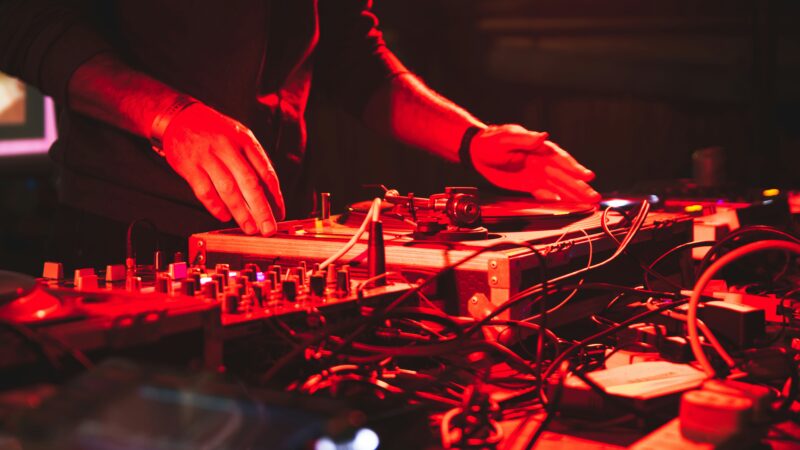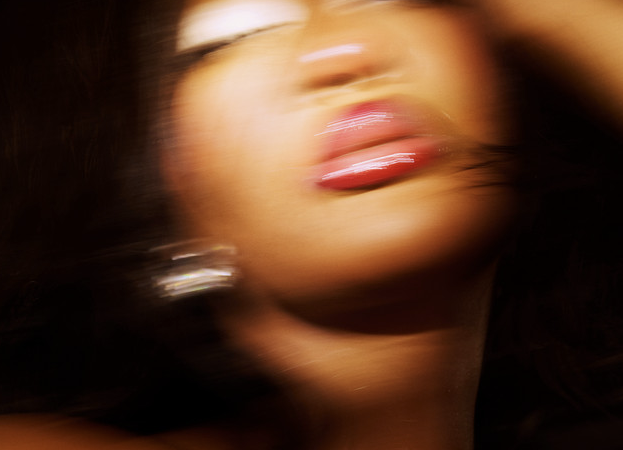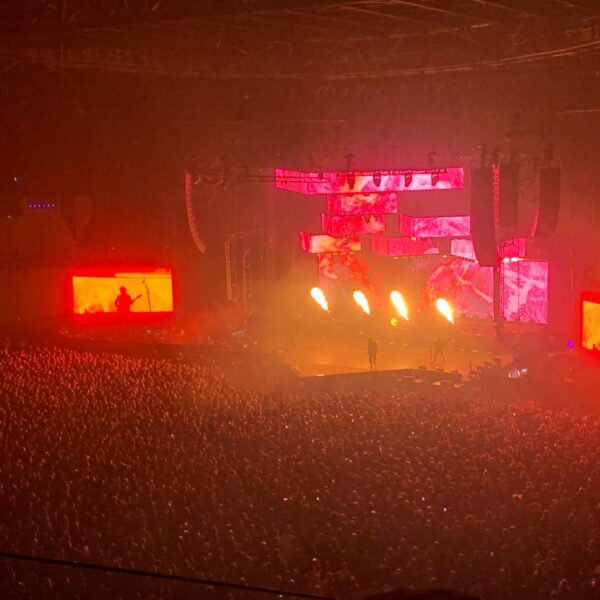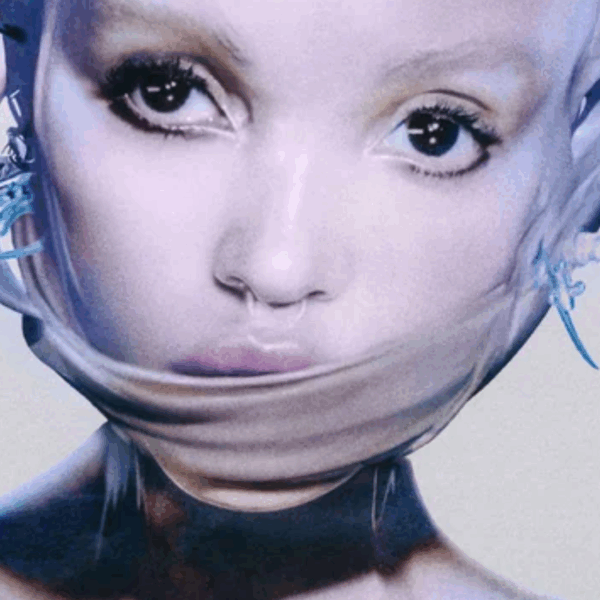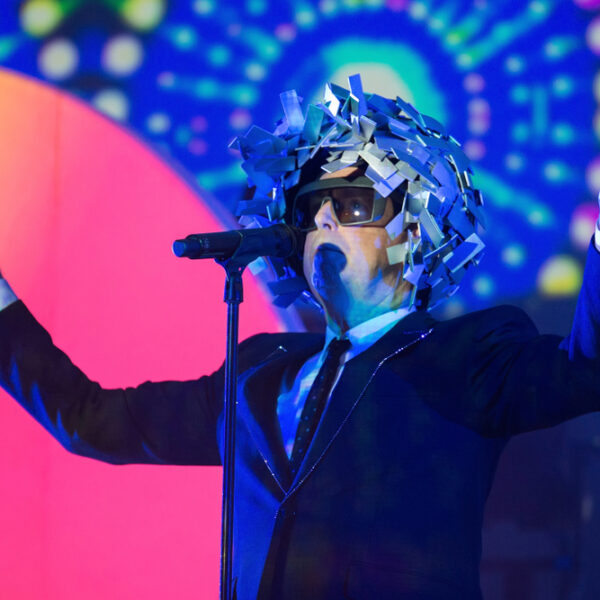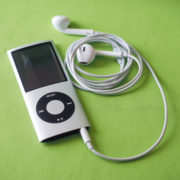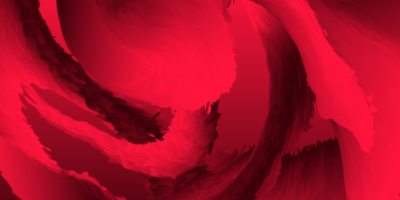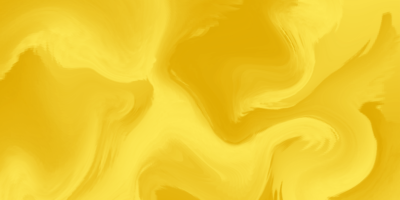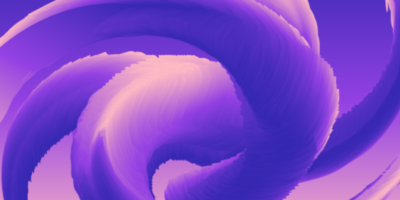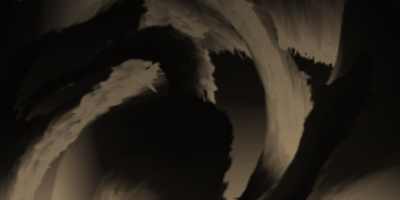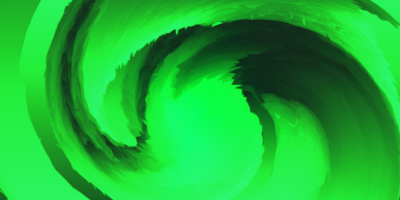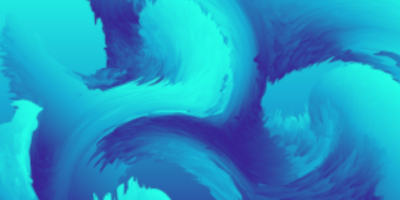Elusive, one of the most important music producers of the last 20 years, and back: while the ‘nightmare to interview’ tag is inaccurate, when it comes to SQUAREPUSHER, the ‘creative genius’ one is perfectly apt.
When the teaser for Squarepusher’s new album Ufalbulum appeared online, fans were ecstatic. Not only were they due to be treated to new material from one of Warp Records’ most experimental and technically skilled artists, but when it was revealed that the enormous LED screen that the helmet-clad producer was performing in front of was part of a new live show, it became apparent that this release was going to be something really special.
Sipping tea and thoughtfully answering questions in a controlled, Essex drawl, Tom Jenkinson is not as inaccessible as some of his musical output. As an artist often mentioned in the same breath as IDM, drill and bass and acid jazz, his persona has been skewed to one of intimidating proportions, especially as he gives few interviews. He openly admits to distrusting journalists, and tells me he has to be careful about revealing too much about his life as in the past some fans’ passion for his music has ventured in to obsessive territory.
He reveals that he doesn’t watch television, which is perhaps ironic considering we are here to talk about his new live show which features two screens, one which will stand behind him, and one placed on the front of a helmet that he will wear throughout the show. “In some people’s opinion it might be a bit of an eccentric move to wear a helmet.” he says, dryly.
It soon becomes clear that the ‘nightmare to interview’ tag is inaccurate, but when it comes to Squarepusher, the ‘creative genius’ one is perfectly apt.
“Since September I’ve been up to my eyeballs making this record,” he says. “I mowed through it, I always do. That’s one thing that I will never change as I think it’s a good thing to work fast and keep ideas fluid, don’t dwell on things too much, and try and keep the decision making process fast. I like to throw ideas down with how it feels best at the time, get it down, move on.”
At the same time as writing and recording Ufalbulum, Tom was busy designing the visuals for the LED light show that will accompany each track when he takes the record on tour. Not only will they appear on an enormous five metre by three metre screen behind him, but also feature on a special helmet, both of which are powered by a program he has been developing since 2005. “What I’ve been trying to do with the images is recreate some of the patterns, geometric forms and colours that the music suggests to me. When I worked on the music in the studio, I worked simultaneously on the visual elements. One of the main motivations of that was to try and integrate the two as closely as possible.”
The urge to make the album more than just music stemmed from Tom’s disdain at how many AV shows end up being distracting rather than enriching for the audience. He’s keen to state that Ufabulum – a purely electronic outing and one which is sure to delight everyone with a penchant for drum machines – can be enjoyed with or without the accompanying live show. Sadly, fans who miss one of the handful of live appearances this year will have to hope he takes the show back on tour as there will be no DVD release. “By virtue of the size of the screen, the intensity of the light, and of course that there are two screens, one of which is on the helmet, means that the DVD release is going to fall short of those initial conditions,” he says.
Tom is a perfectionist, and I am not surprised when he tells me he is a control freak, with strict ideas about what he wants to make and how he wants it to be accessed. This is another key reason why he has been so hands-on with the design and implementation of the LED screens and their contents. “I’ve always had a problem with people strapping visuals on to a show, or if you go to a rave and there’s just graphics being shown on a screen, which are basically placed ad hoc over the top of music, and there’s no real consideration for the appropriateness,” he says. “Certainly in the early 90s, when that kind of thing really got going, you’d see all kinds of cheesy computer graphics mixed up with clips from film and TV – one thing would actually compromise the other, rather than the visual elements augmenting and enriching the experience of the music. As there was no link between the sound and the picture, it was distracting, and took your mind away from the music, or vice versa. So what I’ve tried to do is reverse that, to make the pictures really specifically relevant to the sound.”
Precautions were taken to ensure that a certain level of spontaneity remained when performing live, so the visuals are controlled not only by pre-programmed data, but also by sound. “If I change the audio and remix it live, it will change how the visual elements are generated, as it’s done in real time, it’s not a bit of film,” he says. “What I was trying to get away from, which is what I used to do in shows, is that the audio would be the only factor, so no audio, no image. With these pieces I’ve tried to make them more like a story – there is development throughout the pitch. As in as the music develops changes, so does the picture. Everyone’s response will be different, but I just did it as I always do things, I just done it to my own demands, my own sense of aesthetics. It works for me.”
The narratives are purely geometrical, and flow and ebb along with each track. “I don’t know how to use images of people, I feel comfortable using abstract imagery. I don’t know if I’ll ever be a director of film in the traditional sense, when I listen to music I don’t tend to see images of human beings, my response is more abstract, more numerical.”
We chat about how 2012 is proving to be an exciting year for live shows, with Hexstatic’s pioneering 3D live show, Holotronica, and of course that Snoop, Dre and Tupac performance at Coachella. “I don’t want to be on stage with a fucking hologram, let’s get that straight. I think that would be fucking embarrassing, that is bullshit,” he rants.
“What worries me about this tendency is people’s desire to bring people back from the dead. What does it say about what people think about things that are new? Why do we want to bring all this shit back from the past? Why do people find that that is so appealing that they’ll actually go to the effort, presumably with a lot of technical work involved, to bring someone back from the dead? There’s novelty value in it, but let the dead lie, I’d say. I concern myself with living people first and foremost.”
Sadly for many fans, this is an attitude he also has towards he previous releases. “I’m not interested in my old records. For me, it’s old news. I actively don’t really want to hear them. If anything I react in a not dismissive sense, but I just don’t want to hear that anymore.”

